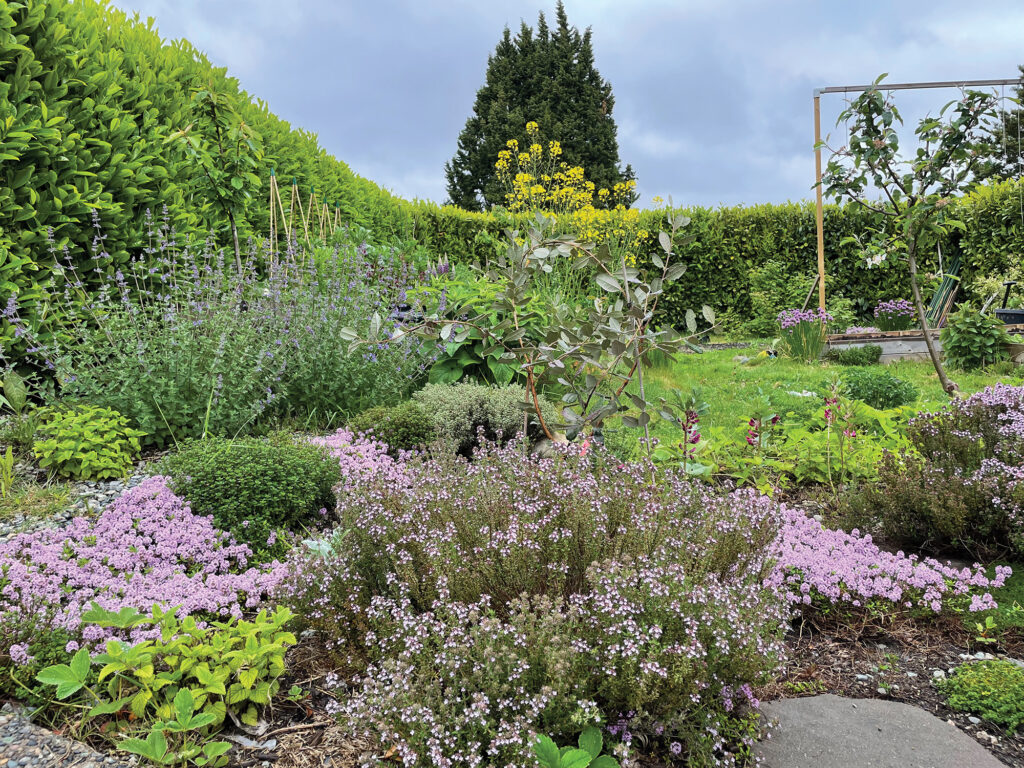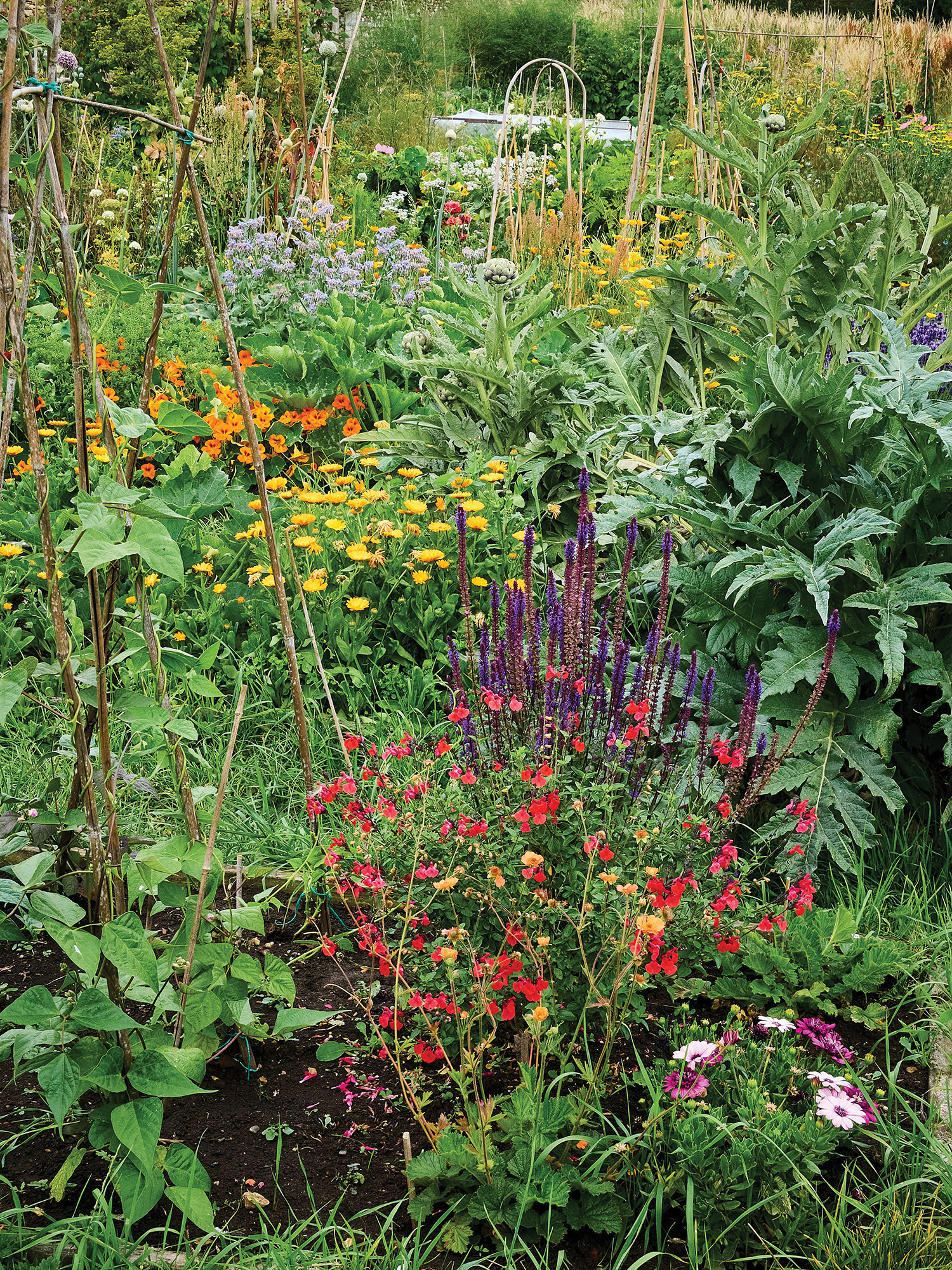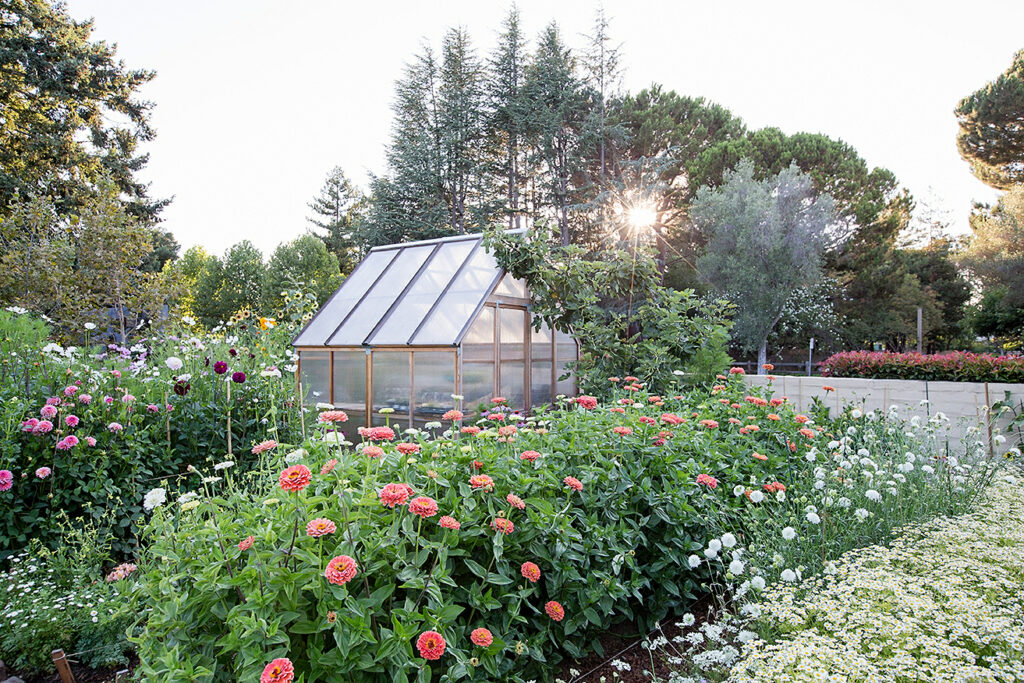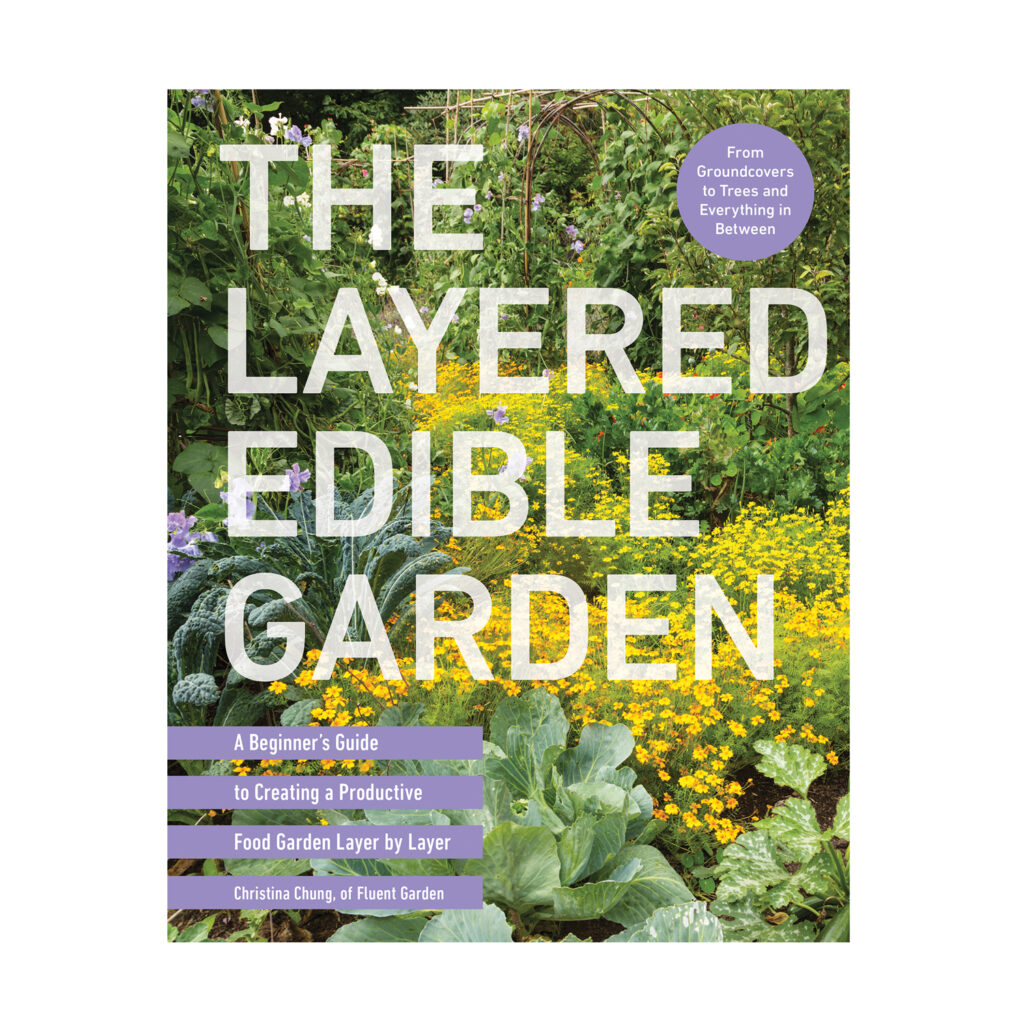
Let’s Face It: Edible Gardens Look Boring. Here’s How to Make Your Bounty Beautiful.
How to think beyond the raised beds and tidy rows of conventional kitchen gardens.

Image courtesy of The Layered Edible Garden by Christina Chung published by Cool Springs Press, 2024. All rights reserved.
Vancouver, B.C.–based horticulturist Christina Chung, known online as @fluent.garden, introduces a modern approach to edible gardening that follows nature’s lead by growing plants in mixed communities instead of monocultures. In her debut book, The Layered Edible Garden: A Beginner’s Guide to Creating a Productive Food Garden, Layer by Layer ($29.99, Cool Springs Press), she shares advice on how to think outside of the raised bed and grow a polyculture paradise, filled with layers of edible plants that outcompete weeds, share resources, and grow beautifully together. As we plan for the busy growing season, Chung shares inspiration on how to tackle your plot with multi-purpose gardening in mind.
Pre-Season Planting

Image courtesy of ‘The Layered Edible Garden’ by Christina Chung published by Cool Springs Press, 2024. All rights reserved.
As much as we love a spontaneous seed-purchasing moment, successful gardening goes hand-in-hand with thoughtful pre-planning. Chung suggests asking yourself “Why?” before selecting any plants or making to-do lists. Is the purpose of your garden to harvest high yields of veggies, provide a well-manicured space for hosting friends, or perhaps nurture a backyard orchard full of fruit trees? Chung says, “Without having a clear understanding of what your eventual goal is, it’s too easy to fall into traps that cost you time and money.” As inspiring as browsing the nursery can be, be careful not to load up on an eclectic mix of new-to-you plants that won’t thrive in the garden. These distractions can create side projects that could have been avoided—but we are all guilty of those impulse purchases, so treat yourself kindly.
If the goal is to start that orchard, Chung suggests prioritizing the research of suitable plants and preparing the site for planting these long-lived investment plants, and don’t get (too) distracted by the latest gardening craze. “If your project feels daunting,” she adds, “break it up into smaller chunks and tackle them one at a time. Not only will you be rewarded with the satisfaction of completing multiple mini-projects and making gradual progress (versus facing multiple half-finished projects), you’ve also built in opportunities to assess what’s working well and what can be improved in the next mini-project.”
Vertically Versatile

Image courtesy of ‘The Layered Edible Garden’ by Christina Chung published by Cool Springs Press, 2024. All rights reserved.
We love to grow upward, but even more satisfying is using materials that can be deployed for multiple kinds of plants and throughout changing seasons. Chung’s go-to has been customizable bamboo stakes that are not only good-looking (and nearly invisible once plantings cover them), but also an affordable choice that can be used in a number of configurations. They’re also small enough to break down for easy storage. Recently she’s been adding more metal supports to the garden as a longer-lasting option that doesn’t degrade from the moisture in wetter climates. She also recommends thinking of trellising with a multipurpose function: “Last winter I installed several cattle panel arches in the front garden, which helped free up valuable soil real estate by allowing more vigorous space hogs like nasturtiums, indeterminate tomatoes, scarlet runner beans, and squashes to grow upwards. The lush foliage trained off of the ground acted as a necessary shade-providing layer for bolt-prone greens planted underneath. They’ll now avoid heat stress during spikes in the temperature.”
Go for the Greenhouse

Thomas J. Story
Whether you’re an avid seed starter in colder months or just want to create a quiet garden getaway, plant-filled conservatories are having a comeback in landscape design. If you’re interested in adding some visual interest to your growing space, but are hesitant to commit, Chung encourages you to envision how the space would be utilized throughout the year. Would a greenhouse unlock exciting shoulder-season activities like early seed starting and propagation experiments, or provide you and your less cold-hardy plants a sheltered space to stay cozy in the winter? If so, then this may be the right investment for you. For those living in warmer climates, know that the structure might be uninhabitable during warmer months and you might be using it for storage or other multi-tasking purposes during that down time.
Chung also advises that before focusing on the style, material, and size of your greenhouse, it’s important to first identify the best spot for the structure. Where level, sunny locations with easy access to electricity and water are best for pure practicality, don’t shy away from placing a greenhouse elsewhere as a standout focal feature to design plantings around.
The Need for Natives

Image courtesy of ‘The Layered Edible Garden’ by Christina Chung published by Cool Springs Press, 2024. All rights reserved.
Even if you’ve only got eyes for edible plants, adding natives into the mix will be beneficial not only to your ecosystem but also to your harvests. Native bees are more efficient pollinators than honeybees, and by supplying these host plants to other pollinators and beneficial insects, you’ll be arming yourself with not only pollination support but also pest control.
For sunny gardens, Chung suggests adding North American natives such as anise hyssop (Agastache foeniculum), western yarrow (Achillea millefolium), and lanceleaf coreopsis (Coreopsis lanceolata), which are all colorful, low-maintenance, and low-water perennials that keep the garden lush and buzzing with beneficial insects even through the drier months.
In the Pacific Northwest, where Chung resides, she also taps into localized natives such as ferns, redwood sorrel, and wild ginger, which cover and protect the soil and liven up shady spots. She suggests getting to know the conditions of your garden by picking native plant palettes inspired by the wild, untended areas around you. This will help narrow down specific native plants that will thrive in even the trickiest areas of your garden.
Lean into Layers

Image courtesy of ‘The Layered Edible Garden’ by Christina Chung published by Cool Springs Press, 2024. All rights reserved.
Christina believes that you don’t need an expansive plot to grow a diverse range of edibles and advises thinking creatively about space and timing when planning out your produce. Where carrots might grow straight and compact, they also have a 60-plus day wait time until harvest and might not be the best solo use of garden real estate. Instead, try adding small fruiting shrubs with delicious berries for grazing, underplanted with leafy greens and culinary herbs that can be harvested for many months. “The beauty of growing in layers,” she adds, “is if you should decide to grow those carrots, you can still share the space with longer-lived plants or ones with shallow root systems as long as cultural conditions are compatible.”
If you’re growing in a single bed, Chung encourages you to decide on the tallest layer first. A dwarf tree or an upright or vase-shaped shrub could serve as the canopy layer for the rest of the planting, consisting of herbaceous perennials and a ground cover or two draping over the edge. For patio potted gardens, each “layer” can be grown in separate containers and grouped together to create a highly flexible and dynamic display.
Most important, she says, go with like-minded plants that will be happy sharing the same space and growing conditions, pointing out that’s why Mediterranean plants such as artichokes, sage, thyme, and rosemary work beautifully together. Don’t overwhelm yourself, select a few to start, and gradually add different layers to the mix.
Buy the Book

Image courtesy of ‘The Layered Edible Garden’ by Christina Chung published by Cool Springs Press, 2024. All rights reserved.
We only recommend things we love. If you buy something through our site, we might earn a commission.
